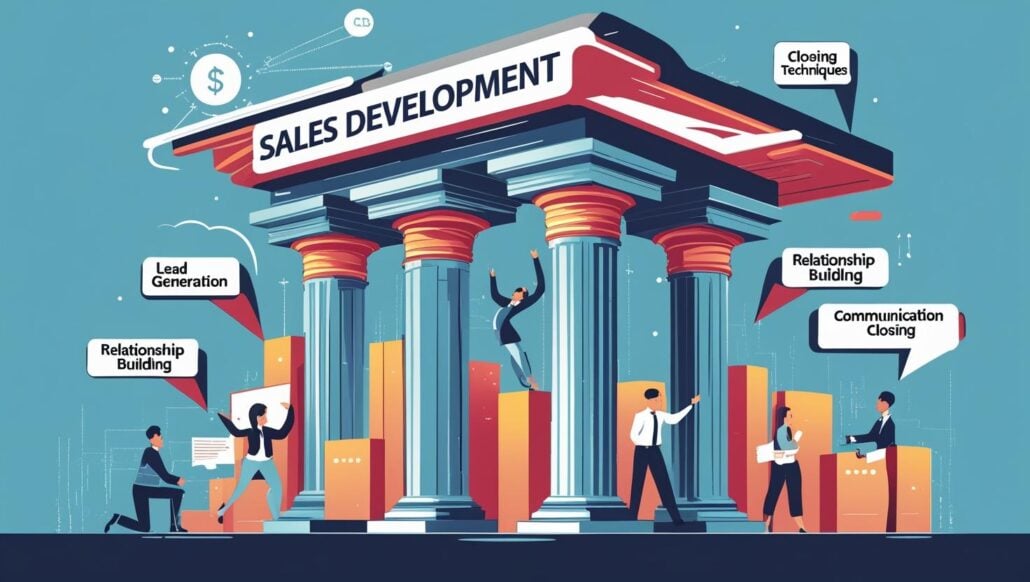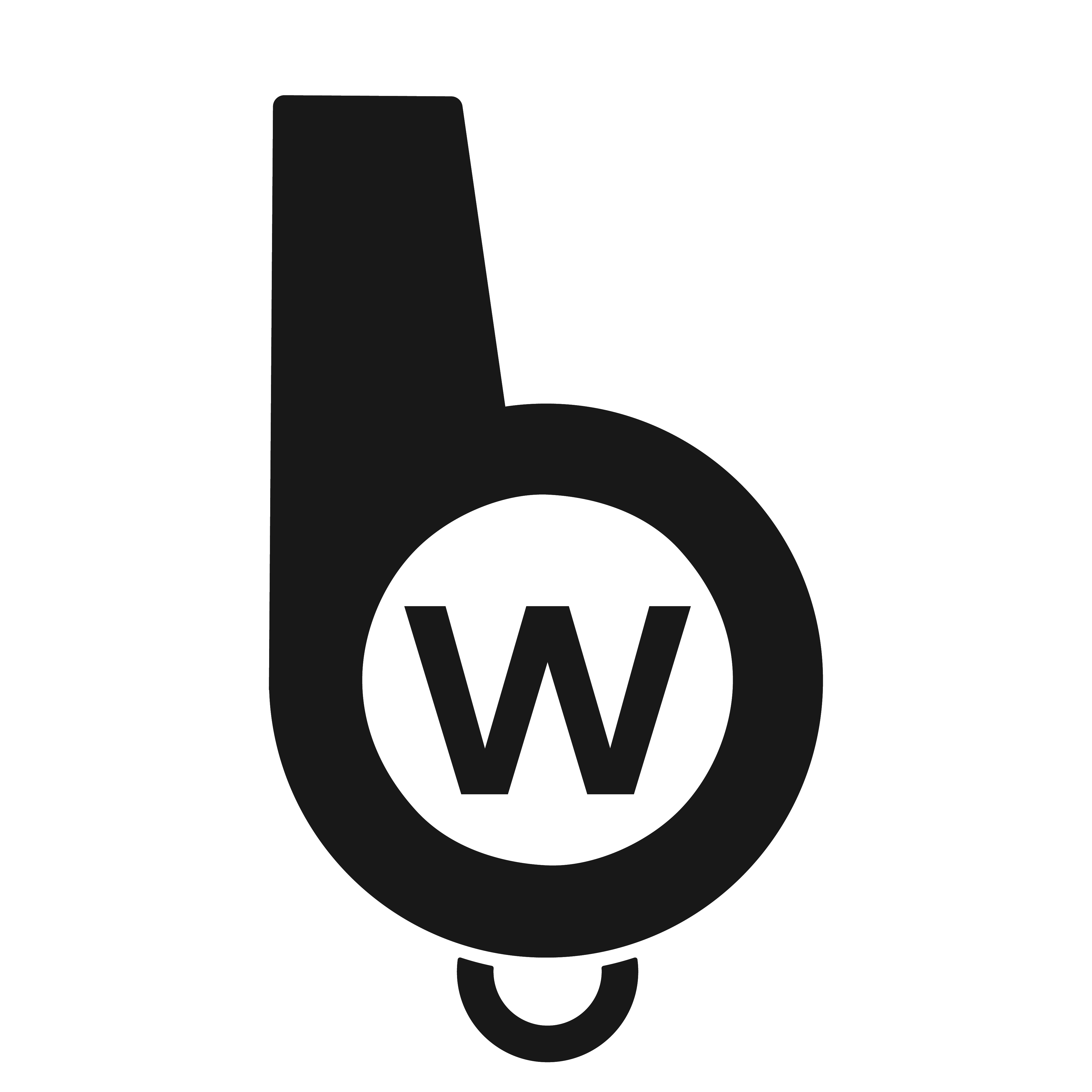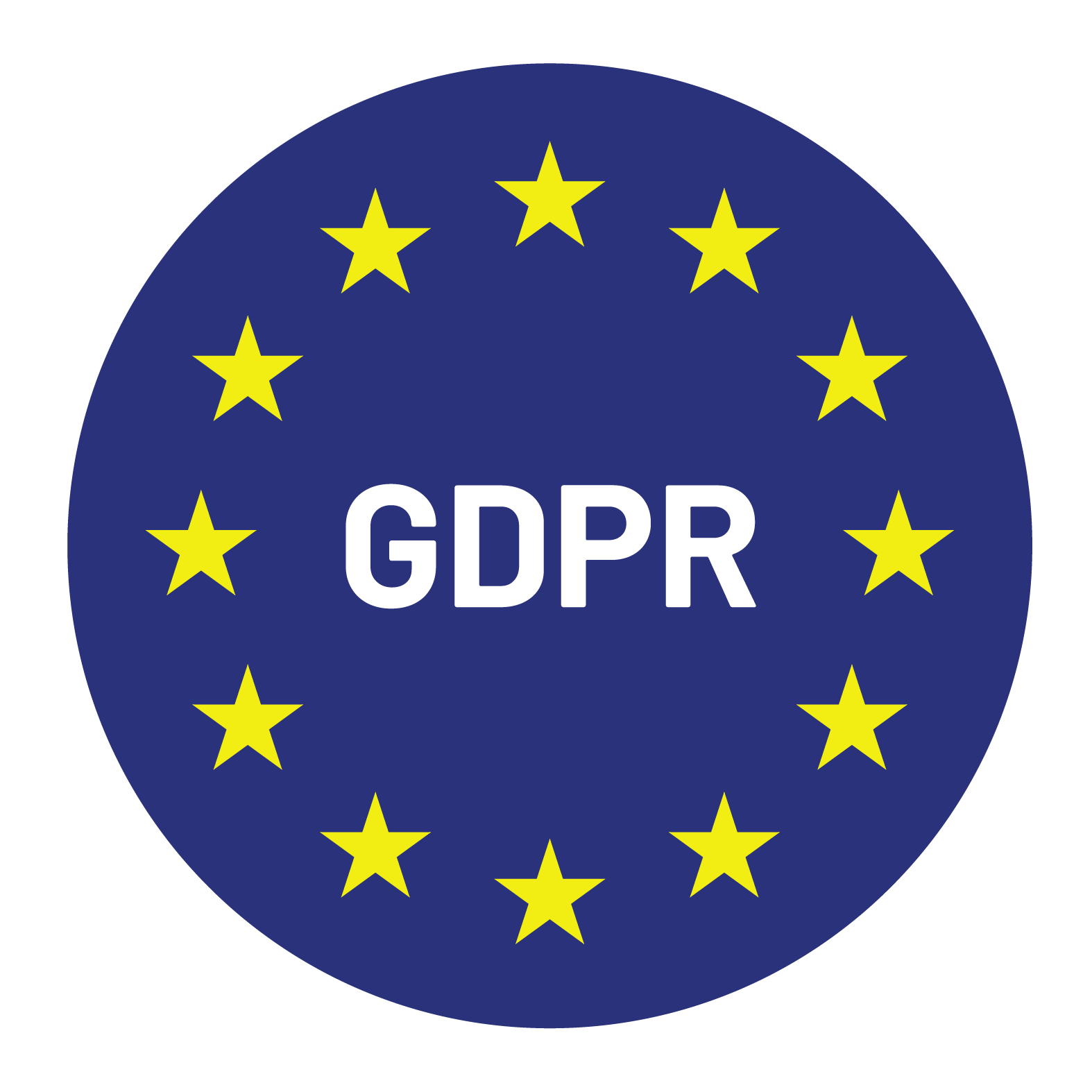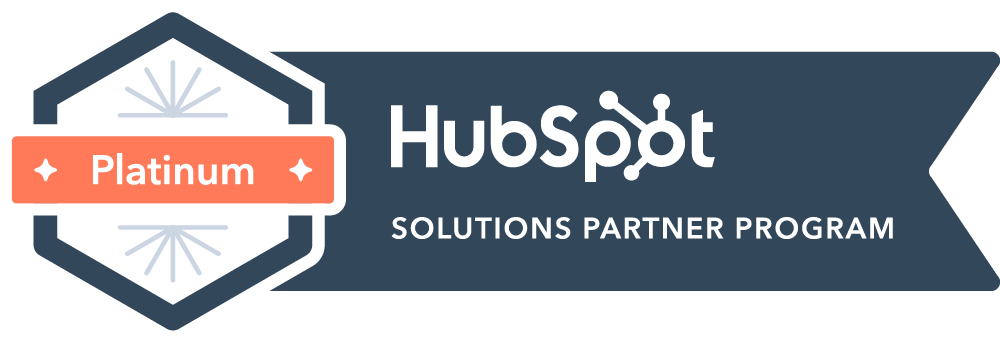12 Clear Signs Your Startup Should Invest in Cold Calling Services

Table of Contents Despite all the hype around automation, social selling, and inbound, cold calling is far from dead. In fact, 57% of C-level executives and VPs still prefer to be contacted by phone, and 49% of buyers say they actually want that first touch to be a call. Yet most startups underuse this channel, either due to the lack of internal capacity or failure to scale it internally. Outsourced B2B cold calling services are designed to fix that. Whether your pipeline has stalled, your SDR churn is too high, or your leadership team is tired of waiting on results, cold calling services deliver what internal teams often can’t: focus, consistency, and speed. If you’re questioning whether your startup should invest in B2B cold calling services, this guide will walk you through 12 clear indicators it’s time to make the call. 1. You’re Generating Leads But Not Booking Meetings Your marketing engine is humming, content is performing, and campaigns are driving clicks, but nothing is turning into meetings. If leads are piling up in your CRM but not progressing to conversations, that’s a clear signal your current sales approach isn’t bridging the gap. Why it happens: Sales teams are often great at closing but struggle with persistent, early-stage outreach. AEs don’t have the time for 8-touch minimum sequences across multiple channels. How cold calling services solve it: Outsourced teams specialize in turning marketing-qualified leads into sales-qualified conversations, armed with call scripts, follow-up workflows, and built-in accountability. Real-world result: GK8, a cybersecurity company, had great inbound volume but inconsistent follow-up. After engaging a cold calling team, they closed a major deal and saw new meetings flood their pipeline. 2. You’re Sitting on a Pile of Unfollowed Leads Your CRM is full of names, emails, and job titles. Maybe you’ve got hundreds or thousands of contacts just sitting there untouched. Every day they get colder. Why it happens: Lack of prioritization, unclear ownership, and bandwidth constraints. That lead you paid $500 to acquire is now collecting dust. How cold calling services solve it: They revive dormant leads with structured sequences and real-time feedback to re-engage leads and gather market intel. Real-world result: Multiple Whistle clients have seen over 20% of “cold” leads reactivated once outbound teams were deployed. 3. You’re a Founder or CXO Still Doing Sales Yourself Early-stage hustle is real, but founder-led sales doesn’t scale. If you’re the CEO sending emails, making calls, and closing deals, you’re limiting growth. Why it happens: In lean teams, the CEO often shoulders sales because they know the product best. But this becomes impossible to sustain at scale. How cold calling services solve it: They free up executive bandwidth by owning top-of-funnel outreach. Founders can focus on expansion, product, and funding while calls keep flowing. Real-world result: At EverX, an AI supply chain startup, the CEO was doing all sales until they brought in cold callers, allowing the team to focus on strategy. 4. You’re Targeting a Niche Market That Needs a Personal Touch You’re selling to compliance officers, IT architects, legal teams, or operations leads with very specific needs. Niche personas need tailored outreach and are skeptical of generalist messaging. How cold calling services solve it: Calls cut through the noise. Skilled SDRs can adjust tone and narrative mid-conversation, ask better questions, and deliver personalized value that emails simply can’t. They give your message the nuance your market demands. Real-world result: One Whistle client targeting compliance officers in financial services doubled their connect-to-meeting rate after switching from email-first to call-first sequences. 5. You’ve Got a Revenue Target and No Clear Plan to Hit It The board wants a pipeline. The investors want velocity. Your sales team wants direction. You’ve checked off every box in the sales readiness checklist yet you’re stuck in a planning loop. Why it happens: Startups often delay outbound planning while focusing on product or funding. When pressure hits to scale revenue, there’s no ramp-up runway left. How cold calling services solve it: They plug in immediately with reps, scripts, and workflows. Within days, you have outbound activity. Within weeks, you have qualified meetings. Real-world result: Lodestar Technologies needed outbound results fast. Cold calling services generated five meetings in January alone and restored internal momentum. 6. Your Sales Team Is Focused on Closing, Not Prospecting You’ve hired account executives to drive revenue, but they’re not generating new conversations. They excel at demos and negotiations but struggle with top-of-funnel outreach. Why it happens: Most closers prefer working deals already in motion. When salespeople juggle prospecting and closing, prospecting usually falls off their plate first. How cold calling services solve it: They complement your closers by filling the pipeline with qualified leads while AEs focus on building relationships and closing revenue. Real-world result: Startups that deployed outsourced SDRs alongside internal AEs often saw a 25–40% increase in close rates. 7. You Need to Book Meetings from a Recent Event You’ve returned from an industry conference with dozens of scanned badges and conversations. Without fast follow-up, most opportunities will vanish within 72 hours. How cold calling services accelerate scheduling: They hit the phones immediately with structured follow-ups across phone, email, and LinkedIn, referencing the event to build familiarity. Real-world result: A Whistle client converted 40% of their event leads into booked meetings within two weeks by activating an event-driven cold calling campaign. 8. You’re a Product-Led Company Shifting to Sales-Led Your self-serve growth model has plateaued. You’ve captured early adopters, but now you need to engage mid-market and enterprise buyers who want conversations, not just landing pages. How cold calling services solve it: They surface high-value accounts in your user base, revive inactive freemium users, and proactively engage decision-makers. Real-world result: One SaaS startup used cold calling to activate its dormant user base, securing three enterprise demos and multiple expansion opportunities within a month. 9. You’re Spending on Marketing But Not Seeing ROI Your content is polished, ad campaigns are funded, and you’re seeing traffic and form fills—but no real pipeline. Digital
How to Close Outbound-Sourced Deals

Table of Contents Why outbound deals fall apart Generating meetings through outbound is hard enough. Converting those meetings into closed revenue is even harder. The typical failure point isn’t messaging. It’s what happens (or doesn’t) during discovery. Many sales teams spend their energy on outreach mechanics, how to get the meeting, without preparing for what to do once they get it. They assume the hard part is over. It’s not. According to James Abraham, CEO of Sandler Israel, and David Zeff, CEO of Whistle, most outbound deals die because discovery is too shallow, too soft, or too seller-centric. The rep doesn’t know what outcome they’re driving toward, the buyer doesn’t know what they’ve signed up for, and by the end of the call, both sides walk away with vague intentions and no real plan. Here’s how to fix that. The real goal of a discovery call A good discovery call isn’t about qualifying a deal or pitching a product. It’s about alignment. Do both sides understand what the next step looks like, what needs to happen before then, and why any of this matters? If your prospect ends the call with “Send me more info,” you don’t have a deal. You have a future follow-up no one’s excited about. Reps often fall into one of two traps: They spend most of the call proving credibility or discussing features They ask a handful of standard questions but never probe deeply enough to surface real urgency The result is the same. No decision. No momentum. Just another prospect lost in a bloated pipeline. What needs to happen before you even start selling Sales doesn’t start with a pitch. It starts with permission. That means taking control of the conversation early and setting clear expectations about what the call is for, what happens at the end, and what the prospect can expect in return. James Abraham uses what he calls an “upfront contract,” a simple but powerful structure that gets both sides on the same page before the real conversation begins. Here’s what it sounds like in practice: “The purpose of this call is to understand more about your challenges and see if there’s a fit. If at any point you feel like this isn’t right for you, you can tell me. And if I feel like I’m not the right resource, I’ll tell you that too. Fair enough? At the end of this call, if it makes sense, we can talk about a clear next step, whether that’s bringing in more stakeholders, taking a small step forward, or parting ways.” It’s not complicated, but it changes everything. The pressure is gone. Both sides can speak freely. And the rep now has permission to ask real questions, not just polite ones. Stop chasing fake yeses Salespeople hate hearing “no,” so they settle for “maybe.” They walk away from a meeting convinced they have a strong lead, when the reality is much less promising. James calls this “happy ears”, hearing what you want to hear because it’s easier than facing the truth. Strong sellers aim for clarity, not comfort. They ask tough questions early. They qualify with honesty. And they make it easy for the buyer to say no, because that’s what gives the yes its weight. If a prospect doesn’t have a real problem, isn’t willing to spend, or can’t make a decision, the rep needs to know that now, not three follow-ups later. Qualifying outbound prospects is different Inbound buyers show up with some intent. Outbound prospects often don’t. That means the discovery call has to do more work. For outbound to convert, the rep needs to: Create space for real dialogue Ask questions that surface business pain, not just preferences Tie the prospect’s goals to a measurable business impact Understand the decision-making process and timeline Leave the call with a mutually agreed-upon next step This doesn’t happen by accident. It happens when the seller has a clear plan. The Sandler Success Triangle One of the most useful frameworks discussed in the webinar is Sandler’s Success Triangle, which centers on three core elements: Behavior, Attitude, and Technique. Behavior Are you doing the right activities consistently? That means more than just sending emails. It includes prospecting, preparation, discovery, and follow-up with a purpose. It also includes having a process, not just a personality. Attitude Do you believe in what you’re doing? Do you see yourself as a peer to your prospect, or as someone hoping for a favor? Sales is a mental game. If you show up needy or unsure, your prospect will feel it. Top sellers don’t need the deal. They want to help. There’s a difference. Technique Do you know how to lead the conversation? Can you surface hidden objections, push for clarity, and build trust without being overly eager? Sales techniques matter, but only when backed by the right mindset and behaviors. All three parts of the triangle work together. You can’t fake one and expect the others to carry you. Closing starts long before the contract By the time a proposal is sent, most of the sale has already happened, or it hasn’t. If a deal is going to fall apart, it usually falls apart quietly during discovery. That’s why Whistle trains SDRs to qualify properly before handing off meetings to AEs. And it’s why AEs need to treat discovery as the most critical part of the sales cycle, not just a preliminary step. Closing outbound deals isn’t about being persuasive. It’s about being thorough, thoughtful, and structured from the first call. Keep selling after the deal A signed contract isn’t the finish line. It’s the starting point of adoption, expansion, and long-term value. Too often, sales teams disappear after the deal is done. This breaks trust and undermines everything built during the sales process. The handover to customer success is important, but it’s not an excuse for disengagement. As James pointed out in the webinar, customers often go back to
The Build vs. Buy Decision: Evaluating Options for Your Sales Development Needs

Table of Contents You’ve set ambitious sales targets. Your pipeline needs more qualified leads. And the pressure to deliver results is building. You know SDR support isn’t optional; it’s overdue. What happens next often sets the tone for your entire revenue strategy: Do you build an in-house SDR team from scratch? Or do you buy the capability by outsourcing to a team that’s already operational and trained? This isn’t just a hiring decision. It’s a strategic one. How you approach sales development, who’s doing the work, how fast they can ramp, and how closely they align with your goals has long-term consequences for growth, efficiency, and internal capacity. Both options have their strengths. Both come with trade-offs. What matters is how well each path matches your sales development needs, your internal readiness, and your tolerance for risk. Defining Your Sales Development Needs: The Foundation of Your Decision Before weighing models, the most productive place to start is with clarity. Companies often jump straight into sourcing candidates or meeting with agencies, without asking the most important question: What do we need from an SDR team? Start with lead generation goals. Are you trying to hit a specific number of meetings per month? Build brand awareness in new markets? Test messaging in a new vertical? The clearer the target, the better you can assess what kind of team structure will support it. Next, consider the budget. Not just what you want to spend, but what you’re realistically prepared to allocate across recruitment, salaries, tech stack, training, and management if you build internally, or monthly contract costs if you outsource. Timeline is another key variable. If you need results in 30 days, building in-house may not be the best use of time. But if you have six months and want a team fully immersed in your company culture, it might be worth the investment. Industry knowledge and technical complexity matter too. Some sales cycles require deep product understanding. Others don’t. Ask yourself what level of ramp-up your SDRs will face, and whether that onboarding is better done in-house or externally. Lastly, think about integration. How will SDRs fit into your existing sales and marketing structure? Who’s managing them? What support do they need to succeed? Every business is different, but one thing is consistent: guessing your way through this process costs more in the long run than planning it properly upfront. The “Build” Option: Establishing an In-House SDR Team Some companies prefer to build their SDR function in-house. Done well, it creates a team that reflects your internal culture, works closely with sales and marketing, and becomes deeply familiar with your product. Direct control over team culture and processes When you hire directly, you shape how the SDR team operates from day one. You can define processes that match your workflow, ensure alignment with your brand voice, and build internal loyalty. There’s no middle layer between your business and the people doing outreach. Deeper integration with existing sales and marketing teams In-house SDRs sit closer to your AE team. They attend internal standups, hear product feedback in real time, and can collaborate more easily with marketing on messaging and target accounts. Communication is faster and often more consistent. Potential for long-term knowledge retention and IP development Over time, in-house teams develop a playbook based on what works for your buyers, your segments, and your product positioning. That knowledge stays inside the company and compounds over time, as long as you retain your top performers. But building internally isn’t without cost. Higher upfront costs (recruitment, training, infrastructure) Hiring SDRs means investing in salaries, benefits, onboarding, and sales tools. Add the time it takes to interview, onboard, and coach new hires, and the true cost is much higher than the job description implies. Longer time-to-productivity for new hires Even strong SDR hires take time to ramp. They need to learn your ICP, product value, sales motion, and systems. That delay can affect your short-term targets and increase the pressure on other teams to carry the load in the meantime. Management overhead and the need for specialized leadership SDR teams don’t run themselves. You’ll need experienced leadership, someone who knows how to coach, motivate, and hold reps accountable. That adds another layer of hiring, salary, and strategy. Challenges in scaling quickly and adapting to fluctuating needs If demand surges, scaling an in-house team takes time. If it drops, you may find yourself with excess headcount. Building gives you control, but it doesn’t always give you flexibility. The “Buy” Option: Leveraging Strategic SDR Outsourcing The alternative to building is buying. In this context, “buying” means partnering with a specialized provider who supplies experienced SDRs and manages the operation on your behalf. Done right, it offers speed, scalability, and access to refined outreach strategies. Faster time-to-value and quicker scaling capabilities Outsourced SDR teams are already trained, equipped, and ready to go. You can brief the partner on your ICP, messaging, and goals, and often start seeing qualified leads within weeks instead of months. When you need to scale, they can ramp capacity quickly. Access to specialized expertise and proven methodologies Experienced providers bring tested processes, established systems, and industry benchmarks. They’ve seen what works and what doesn’t across different sectors, regions, and segments. You get access to that knowledge without having to build it internally. More predictable and potentially lower upfront costs Outsourcing typically comes with fixed monthly pricing. You avoid recruitment fees, tool licensing, and the management overhead that comes with in-house teams. It’s not always cheaper in the long run, but it’s often more predictable, especially when internal resources are stretched thin. Flexibility to adjust capacity based on your sales development needs You can increase or decrease your SDR allocation based on business needs without committing to long-term headcount. That makes outsourced models well-suited to pilot programs, seasonal spikes, or fast-changing priorities. Still, there are limitations. Less direct control over day-to-day operations You’re not managing the team. That can be a benefit
Southeast Asian Market Access: Strategic SDR Deployment for Regional Growth

Table of Contents Southeast Asia is projected to become the world’s fourth-largest economy by 2030, driven by a young population, rapid urbanization, and an increasing appetite for digital services. For B2B companies, the region offers serious commercial potential but also serious complexity. Market access here isn’t about choosing a country and launching a campaign. Each nation has its own business etiquette, regulatory quirks, and buyer expectations. A one-size-fits-all outreach strategy won’t get far. Many global companies try to scale quickly by applying Western sales models with minor adjustments. They localize content, but not context. Translate messaging, but not mindset. The result? SDR outreach that feels unfamiliar, even irrelevant, to the people it’s meant to engage. There’s a better approach, one that reflects how Southeast Asian buyers operate, how trust is earned, and how opportunity unfolds when outreach is done well. It starts with how you build and deploy your SDR team. Opportunities and Complexities of the Southeast Asian Market Southeast Asia isn’t a single market. It’s a collection of diverse economies, each with distinct regulatory, cultural, and commercial characteristics. Singapore offers world-class infrastructure and a well-established business environment, often serving as a regional base for multinationals. Indonesia, the most populous country in the region, presents scale and digital-first buyers but requires careful navigation of language and compliance. Vietnam and the Philippines have fast-growing tech sectors and strong English proficiency. Thailand and Malaysia bring both local opportunity and access to broader regional trade networks. Despite common threads, rising internet usage, mobile-first behaviors, and an expanding middle class, the business context varies significantly across countries. Regulations shift from one border to the next. Buyer expectations and communication styles are shaped by local values and traditions. Language isn’t just a translation issue. It reflects how people think, negotiate, and make purchasing decisions. Approaching Southeast Asia with a single outreach strategy is inefficient at best, damaging at worst. The goal is not just to speak the local language, but to understand what buyers care about, how trust is built, and what makes your message resonate. That takes more than a well-written cold email. It takes the right SDR deployment model. Strategic SDR Deployment Models for Southeast Asian Market Access There’s no single best way to structure sales development across Southeast Asia. The right approach depends on your business goals, available resources, and where you expect the strongest traction. Below are five strategic models used by high-performing teams. Hub-and-Spoke Model: Centralized Coordination with Localized Execution This model uses a central hub, often based in Singapore or a home market HQ, to develop sales strategy, manage training, and ensure consistent messaging. Local SDRs are then hired in target countries to handle outreach, prospect engagement, and market-specific adjustments. It offers operational control while allowing for country-level customization. Teams benefit from centralized global sales planning and performance oversight, while still having boots on the ground who understand local buying behavior. The challenge is coordination. Time zones, training consistency, and localized sales enablement all need attention. But when well-managed, the hub-and-spoke model balances efficiency with local depth. Fully Localized SDR Teams: Building In-Country Presence For companies committed to deep regional growth, hiring in-country sales teams can offer a significant advantage. These SDRs know the market, speak the language, and understand how deals happen. The benefit is clear: outreach feels local because it is local. Messaging can be tailored with confidence, and SDRs are more attuned to local buyer signals. Trust builds faster. Of course, this model requires strong regional oversight, legal compliance, and potentially higher upfront investment. But for companies serious about brand presence in Southeast Asia, the credibility gained from having localized sales force is often worth it. Remote SDR Teams with Native Language and Cultural Expertise Not every business can build an in-country team in every market. One effective workaround is hiring remote SDRs who are native speakers or have deep cultural knowledge of the target market. These remote global sales teams can operate from anywhere, reducing overhead while still enabling culturally fluent outreach. The best candidates combine language fluency with a clear grasp of how business is done in their region, from decision-making timelines to acceptable follow-up frequency. This approach broadens your talent pool and lowers costs, but it requires a rigorous hiring and onboarding process. Fluency alone isn’t enough. Remote SDRs must be trained to understand your product, your positioning, and how to bring it to life in their region. Hybrid Models: Combining Centralized and Localized Approaches In many cases, a blended strategy makes the most sense. For example, a company might centralize SDR activity for smaller SEA markets while placing in-country reps in higher-potential ones like Indonesia or Vietnam. This hybrid sales team structure allows flexibility based on budget, opportunity size, and the complexity of each market. You can centralize what works and localize what needs precision. It’s not just about cost optimization. The best hybrid models treat localization as a deliberate choice, not an afterthought. They use data to decide where to go deep and where to stay lean , and they revisit that mix regularly as results come in. Leveraging Local Partnerships and Resellers For some companies, the fastest way to gain traction in Southeast Asia is through local partners. Working with established resellers or channel partners can accelerate market access by tapping into existing relationships, infrastructure, and credibility. These partnerships are especially useful for initial outreach and lead generation, particularly in countries where regulatory hurdles or relationship-based selling dominate. That said, managing channel partnerships in Southeast Asia requires clear incentives, regular communication, and a shared understanding of goals. If you outsource the work, don’t outsource the accountability. Whistle has supported companies across all five of these models, adapting SDR strategy to fit market realities. The structure matters, but what matters more is whether your sales outreach speaks to the people you’re trying to reach, in tone, timing, and substance. The Critical Role of Localization and Cultural Understanding in SEA Outreach Outreach that works in San Francisco doesn’t
The Art of the SDR Interview: Uncovering Hidden Potential in Candidates

Table of Contents Hiring SDRs is more challenging than it appears. Resumes rarely reveal what someone is capable of, and interviews often prioritize confidence over potential. The candidates who speak well are not always the ones who will perform well in the role. Many of the traits that make someone successful as an SDR, persistence, curiosity, and adaptability, are difficult to spot in a short interview. They do not show up in a list of qualifications. They show up in how someone responds under pressure, how they take feedback, and how quickly they improve. If you are relying on polished answers or sales experience alone, you are likely missing people who could succeed with the right support. Finding the right fit means knowing what to look for and how to bring it out in conversation. Interviews are your first and best shot at getting this right. Not by filtering for confidence, but by paying close attention to how a person thinks, listens, and learns. Anyone can memorize a sales script. Not everyone knows how to adapt when the conversation goes off-script. The interview is not just a formality. It is one of the few chances you have to assess whether a candidate has the mindset, habits, and raw ability to succeed in a demanding role. But that only happens if the process is designed to bring those traits out. When interviews are structured with intent, they do more than filter: they reveal. And that is what gives you a real advantage in building a high-performing SDR team. Beyond the Checklist: Why Traditional Interviews Often Miss Hidden SDR Potential The typical hiring process for SDRs tends to reward performance during the interview, not long-term potential. This often means the candidates who sound best, the ones who are confident, polished, and quick on their feet, make it through. But sales development requires a different kind of consistency. It rewards persistence, adaptability, and the ability to learn fast and bounce back even faster. Most of these traits do not show up on a resume. They also do not come through when you ask a candidate to talk about their biggest strength or describe a time they worked in a team. These questions are fine as a warm-up. But if you stop there, you will miss the people who are quiet but driven, smart but undertrained, and coachable enough to become your best performers in six months. Strong SDRs often have varied backgrounds. Many do not come from a formal sales environment. Some may not even have B2B experience. What matters is how they think under pressure, how they respond to feedback, and whether they show signs of being self-motivated and eager to improve. That does not come through if your questions stay at the surface. Hiring well starts with asking better questions and knowing what to look for in the answers. Key Skills and Traits to Uncover in an SDR Interview Drive and Resilience: Assessing Hunger for Success and Perseverance The best SDRs are not just motivated. They are relentless. Rejection is part of the job, and you need people who do not take it personally or let it stall their momentum. Ask about a time they failed at something they cared about. Listen for how they responded, what they did next, and whether they talk about the experience with accountability and insight. To get a sense of their drive, you can ask them to describe something they taught themselves outside of work. It could be personal or professional. The point is to see if they seek progress without waiting for someone to hand them a roadmap. Communication Prowess: Evaluating Articulation, Active Listening, and Persuasion Good communication in sales is not about sounding slick. It is about being clear, concise, and relevant. Role-plays are a good way to test this. Give the candidate a mock product and a customer persona. Ask them to introduce themselves, ask questions, and pitch the product. Pay attention to how well they listen, how they respond to new information, and whether they adapt their message as the conversation unfolds. You are not looking for polish. You are looking for thoughtfulness, awareness, and signs that they can connect with people without relying on a script. Curiosity and Learnability: Identifying a Growth Mindset and Adaptability Sales change quickly. Messaging shifts. ICPs get refined. Tools update. What you need is someone who can absorb information, stay open to new ideas, and get better over time. Ask what they have learned in the last six months and how they went about learning it. You can also ask how they would go about selling a product they have never seen before. The goal is to hear how they approach new problems, not whether they get the answer right. Curiosity often shows up in the questions they ask you. If they are not asking anything meaningful, that tells you something, too. Coachability and Openness to Feedback: Gauging Willingness to Learn and Improve Even strong hires will need training. If someone is not open to feedback, they will plateau quickly. Ask about a piece of feedback they received that was hard to hear. What did they do with it? Did they apply it? Did it improve their work? Coachability shows in how they respond when challenged. You can test this directly in a role-play. Give them feedback mid-exercise and ask them to run it again. See how they adjust, or if they do at all. Organization and Time Management: Evaluating Structure and Efficiency SDRs juggle a lot. Outreach, follow-ups, lead prioritization, CRM hygiene, it all adds up fast. Ask how they plan their day and how they manage competing priorities. Get specific. Do they use a calendar? How do they track their progress? How do they handle distractions? People with strong organizational skills often have a system, even if it is informal. You are looking for signs they can stay focused and move through tasks methodically. Problem-Solving and Resourcefulness: Assessing Initiative and
Data-Powered Prospecting: Accessing Leads with On-Demand Data

Table of Contents Manual prospecting is something every sales rep has wrestled with. You spend hours trawling through LinkedIn, piecing together company profiles that barely tell you anything useful. The lead lists look promising until half the contacts bounce. Emails vanish into inactive inboxes. And the worst part? Realising you’ve just chased someone who was never in the market to buy. It is slow, frustrating, and far too uncertain. Sales teams need a better way to find the right people to speak with. Not just any decision-maker, but those who are likely to care, are ready to act, and have a reason to engage. That is where data-powered prospecting comes in. Rather than guessing who to contact and when, data-powered prospecting uses real-time, on-demand data to identify high-potential leads based on meaningful signals. It is a smarter approach that helps teams focus their time where it matters most. Sales teams that rely on outdated or incomplete data are not only wasting time, but they are also missing out on conversations that could turn into revenue. On-demand data changes that. It gives reps the clarity to know who to contact, when to reach out, and what to say. The result is a more accurate, more focused prospecting motion that gets responses from the right people. The Inefficiencies of Traditional Prospecting Methods Manual prospecting often feels like a numbers game, but it is not a very effective one. SDRs can spend hours on lead research only to discover that the information is outdated or the prospect is irrelevant. Relying on generic lists or static databases often leads to high bounce rates, poor engagement, and wasted effort. Even when the contact is real, the context is usually missing. Does this company align with your ideal customer profile? Are they using a competitor’s product? Have they shown any buying intent recently? Without those answers, outreach becomes a shot in the dark. The other issue is timing. By the time your SDR gets around to researching and reaching out, the window of opportunity may have already passed. Prospects are not waiting around for your team to reach them. If they are showing signs of interest and you are not first to engage, you are probably not going to get a second chance. It is not just inefficient. It is ineffective. Traditional prospecting methods force reps to rely on guesswork, which leads to lower conversion rates and slower pipeline growth. What sales teams need is a way to identify and act on qualified leads in real time. The Power of On-Demand Data in Data-Powered Prospecting Accessing Real-Time and Accurate Prospect Information Sales teams today have access to tools that offer real-time, accurate prospect information at scale. Sales intelligence platforms and data enrichment tools give SDRs the context they need to act fast and with precision. This is a significant shift from the days of relying on static spreadsheets or outdated CRM records. What sets these tools apart is their ability to update continuously. You can spot job changes, company funding rounds, technology updates, and new hires almost as soon as they happen. This means your SDRs are always working with the most relevant and timely information. Accurate lead data does not just save time. It improves your chances of reaching someone at the right moment, with the right message. Identifying High-Potential Leads Based on Key Indicators On-demand data allows teams to filter and prioritize leads based on firmographic, demographic, technographic, and psychographic criteria. This is where prospecting shifts from quantity to quality. When you know which company sizes, industries, and regions perform best, and when you can match leads to that Ideal Customer Profile, your outreach becomes more strategic. You are not just casting a wide net. You are selecting leads based on specific, proven success factors. This level of targeted lead identification increases your chances of connecting with the right buyers. And when SDRs can focus their time on high-potential accounts, conversion rates improve across the board. Understanding Buyer Intent and Engagement Signals Not all leads are created equal. Some are just browsing. Others are actively looking for solutions. Intent data and engagement tracking tools help you tell the difference. By monitoring content consumption, website visits, competitor product searches, and third-party signals, your team can prioritize leads who are actively showing buying intent. These are the people most likely to respond and convert. This behavioral prospecting strategy allows SDRs to act at the right time. You are no longer waiting for a prospect to fill out a form. You are reaching out the moment they demonstrate interest, which gives you a real advantage. Personalizing Outreach with Contextual Data Once you have identified a high-potential lead, the next step is to stand out. This is where on-demand data becomes even more valuable. With access to company information, recent news, hiring trends, or tech stack insights, SDRs can tailor their messaging to speak directly to the prospect’s current priorities. Personalization goes beyond using someone’s name. It is about showing that you understand their context. Relevant messaging makes a difference. It signals that you are not just blasting generic emails. You are reaching out for a reason, and you have done your homework. Prioritizing Outreach Efforts for Maximum Impact Every SDR has a limited number of hours in the day. On-demand data helps them use that time more effectively. Instead of working down a list alphabetically or randomly, data insights allow SDRs to focus on the leads with the highest likelihood of converting. Lead scoring, activity tracking, and intent indicators help structure outreach based on real signals, not assumptions. The result is a smarter use of time and a pipeline that’s actually worth tracking. High-intent prospects get attention when it counts. Low-fit leads get filtered out before they drain your team’s energy. Sales productivity picks up when every action has a reason behind it, not just because someone was next on the list. Uncovering Hidden Opportunities and New Markets One of the lesser-known benefits of data-powered
Decoding Buyer Intent: A Smarter Approach to Lead Qualification

Table of Contents Not every lead deserves your sales team’s attention. But without the right structure in place, too many still get it. Sales teams are often measured by output, but the real problem usually starts at the top of the funnel. When reps spend time chasing leads with limited interest or no real buying power, productivity slows, morale dips, and pipeline quality suffers. High-performing teams don’t simply work harder. They apply better judgment earlier in the process by qualifying leads with more precision. They know how to spot genuine buyer intent, interpret meaningful signals, and prioritize time and energy toward the prospects most likely to convert. Strong lead qualification depends on structure. It requires the right inputs, consistent criteria, and a clear view of what matters. With that in place, teams spend less time chasing volume and more time moving the right opportunities forward. Focusing on buyer intent improves clarity. It filters out the noise, sharpens targeting, and keeps attention where it counts. The result is a pipeline built on substance rather than assumption. The Pitfalls of Surface-Level Lead Qualification Most teams have some form of lead scoring. But too often, it’s a checkbox exercise based on demographic or firmographic criteria. Job title, company size, or industry might tell you if a lead looks like a fit on paper. But they say little about the urgency to buy. Chasing leads with no intent leads to bloated pipelines, missed quotas, and frustration across the team. Reps burn time on conversations that go nowhere, while genuinely interested buyers get ignored or delayed. Poor qualification doesn’t just slow the sales cycle. It wastes it. The challenge for many sales teams is not generating leads. It is spending too much time on the wrong ones. When qualification depends on surface-level attributes like company size or job title, teams end up pursuing prospects who are unlikely to convert. Activity increases, but outcomes do not. This creates a false sense of progress. Reps fill their calendars with low-value meetings and chase leads that never move past polite interest. Pipelines look full on paper, but very few deals make it across the line. Instead of driving results, teams are left navigating bloated forecasts and inconsistent performance. A better approach starts with understanding buyer intent. This is not about intuition. It is about tracking how people behave, what actions they take, and the substance of their engagement. Buyer intent shows itself through behavior: the pages people visit, the questions they ask, and how they respond in real conversations. These are the signals that separate casual browsers from serious buyers. A lead who shows consistent interest, engages meaningfully, and signals urgency is worth the effort. One who fills out a form but never follows up is not. Decoding Buyer Intent: The Core Principles of a High-Intent Lead Model Behavioral Signals: Tracking Actions that Indicate Intent What people do tells you more than what they say. Buyer behavior, like visiting high-intent pages, requesting demos, or attending webinars, shows where someone is in their decision-making process. Tracking this behavior over time reveals patterns. One click means little. But repeated visits to the pricing page or downloading a customer case study paints a very different picture. These behavioral signals, when tracked properly, create a real-time view of interest. This data can guide reps toward the conversations that matter most. It can also give marketing clear feedback on which campaigns produce leads worth pursuing. Demographic and Firmographic Fit: Ensuring Alignment with the Ideal Customer Profile Buyer intent is essential, but it is not sufficient on its own. A lead may show high engagement, visiting your website repeatedly, clicking on emails, attending a webinar, yet still be a poor fit for what your business offers. Without the right business profile, that engagement may not translate into a successful or profitable customer relationship. This is why demographic and firmographic criteria remain important. Factors such as industry, company size, revenue range, geographic location, and job function help determine whether a lead aligns with your Ideal Customer Profile. If a company falls far outside those parameters, even the most enthusiastic interest is unlikely to lead to a productive deal. Effective qualification happens when intent and fit are evaluated together. A lead who is engaged and also matches your target profile is far more likely to close. On the other hand, prioritizing one without the other creates problems—either by pursuing leads who are active but not viable, or by overlooking leads who are a perfect fit but lack visible engagement. Strong sales performance depends on filtering for both. That is how teams focus their time where it has the most impact. Urgency and Timeline: Assessing the Prospect’s Need for a Solution Not every buyer is ready to move now. Some are just browsing. Others have a budget approved and a problem that needs solving yesterday. A strong qualification model accounts for this. It identifies urgency by probing the current pain points and asking when the decision is expected. This prevents stalled deals and improves forecast accuracy. Reps who understand the buyer’s timeline can adjust their follow-up strategy and focus on prospects who are more likely to close this quarter, not next year. Budget and Authority: Identifying Decision-Makers and Financial Capacity A deal with no budget or authority behind it is not a deal. It’s a conversation. Sales teams need to know whether they’re speaking to someone who can say yes, and whether there are resources to support that yes. This doesn’t mean forcing the budget question too early. It means being smart about signals. Is this person bringing colleagues into the conversation? Are they asking about pricing or procurement steps? Those are signs that authority and budget may be in place. Good qualification surfaces these points early, so reps don’t get stuck navigating internal roadblocks after months of engagement. Problem-Solution Fit: Evaluating Alignment with Your Offering Even if a lead is active and well-resourced, it doesn’t mean your solution is the right one.
Aligning Sales, Marketing, and Operations with Strategic HubSpot RevOps

Table of Contents You can have a great product and a strong team. But if sales, marketing, and operations are misaligned, you’re leaving revenue on the table. Leads go cold, and promising deals stall. Reporting lacks clarity, and nobody agrees on what’s working or what needs to change. This isn’t a tools problem. It’s a structural problem. Strategic RevOps in HubSpot helps fix that. When implemented with intention, it brings order to the way teams collaborate. It connects systems, processes, and goals so every part of the revenue engine pulls in the same direction. Not just for better coordination, but for measurable, scalable results. Let’s look at how to build that kind of alignment, and how to make HubSpot the system that powers it. The Cost of Misalignment: Why Siloed Teams Hinder Growth When revenue teams operate in isolation, performance breaks down across the board. Marketing runs campaigns that generate leads, but no one follows up in time. Sales pursues accounts that were never properly qualified in the first place. Operations is left trying to deliver on vague commitments without the right context, tools, or support. And through it all, the customer is the one who feels the disconnect. The impact isn’t limited to internal inefficiencies. Misalignment leads to wasted budget, missed opportunities, and a customer experience that feels disjointed at best. It also makes forecasting difficult and unreliable. Without consistent data and visibility into what’s working at each stage of the funnel, the business can’t scale with confidence. Growth becomes a guessing game, not a strategy. HubSpot can help solve these issues, but only if it’s used with a clear, strategic approach. On its own, the platform is just a tool. What gives it power is the structure behind it. Strategic RevOps brings that structure. It aligns your teams around common goals, ensures everyone is working from the same data, and creates shared accountability across functions. Without that foundation, HubSpot risks becoming just another system where misalignment goes unnoticed, and the same problems continue beneath the surface. Understanding Strategic HubSpot RevOps: A Framework for Alignment Defining Your Unified Revenue Goal and Customer Journey Start by getting every team aligned on one clear goal. That means agreeing on what revenue growth looks like and how it will be measured. Then map the full customer journey: from first interaction to post-sale, to identify who owns what, and where handoffs need to happen. A shared view of the customer journey creates clarity across teams. Marketing is no longer focused solely on hitting MQL targets. They gain visibility into what happens after a lead is passed along and can adjust their efforts accordingly. Sales gets insight into which types of content and messaging resonate during the early stages, allowing for more relevant conversations. Operations can prepare for onboarding with a clear understanding of what was promised and what the customer expects. When every team understands how their role connects to the broader customer experience, collaboration becomes easier and outcomes improve across the board. Establishing Shared Data Models and Definitions in HubSpot If teams define leads, sources, or lifecycle stages differently, reporting will never be reliable. One of the most important RevOps tasks is to create shared data definitions and enforce them inside HubSpot. That means agreeing on contact properties, standardizing lifecycle stages, and creating naming conventions that work across teams. When the data model is consistent, your dashboards tell the full story. And decisions become less reactive and more informed. Implementing Aligned Processes and Workflows in HubSpot Alignment doesn’t scale without process. Once your data is structured, you can build workflows that move leads through the system in a way that makes sense for every team. For example, once a lead hits the MQL threshold, HubSpot can route it to the right rep, trigger internal alerts, and update deal stages automatically. Sales can log outcomes that feed back to marketing for re-nurture or requalification. These processes create speed, reduce manual work, and prevent good opportunities from getting lost. Leveraging HubSpot Tools for Cross-Functional Visibility and Collaboration HubSpot already gives teams what they need to collaborate. The challenge is getting those tools to work across departments. Shared dashboards give real-time visibility into pipeline, lead quality, and conversion rates. Shared inboxes make handoffs clearer. Service Hub connects post-sale activity to the same record, so support has full context. And everyone works from the same data instead of building their version of the truth. Defining Clear Roles, Responsibilities, and SLAs Across Teams When teams aren’t sure where their responsibilities end and someone else’s begin, handoffs start to break down. Leads get dropped, follow-ups are delayed, and important details slip through the cracks. Strategic RevOps solves this by defining clear roles across the revenue team. Each team should know exactly which parts of the customer journey they own. Expectations need to be set not just around outcomes, but around timing, handoff quality, and internal responsiveness. That’s where service-level agreements (SLAs) come in. SLAs make the boundaries clear without turning collaboration into a checklist exercise. When everyone understands who is responsible for what, and when, it creates accountability and momentum without tension. Fostering a Culture of Communication and Collaboration Alignment is built in the day-to-day. Tools and workflows help, but habits matter more. That means scheduling regular meetings where sales, marketing, and operations review performance together. It means setting shared goals and tracking progress together. It means giving teams the space to raise problems and solve them early. HubSpot can support these habits, but leadership needs to make collaboration a priority. Continuously Measuring, Analyzing, and Optimizing Performance in HubSpot The structure you build in HubSpot isn’t static. Revenue teams need to measure what’s working, see what isn’t, and adjust fast. HubSpot’s analytics tools give you visibility into conversion rates, funnel bottlenecks, rep performance, and campaign impact. The goal isn’t just to track numbers, but to use those numbers to make smarter decisions. This kind of feedback loop creates a system that improves over time. And
Building a Robust Sales Pipeline with Global SDR Reach

Table of Contents Sales growth is often measured quarter by quarter. But real success? The kind that lasts comes from building a consistent, scalable pipeline that can withstand short-term disruptions and support long-term goals. A recent McKinsey study found that companies with a healthy pipeline grow revenue up to 10 percent faster than their peers. But what that study didn’t say is that pipeline resilience rarely comes from working one market at a time. Relying on a single geography might be fine during early growth, but as businesses mature, they face new pressures: saturated local markets, slower deal velocity, and increased competition for the same pool of buyers. That’s where global SDR reach comes into play. Sales development teams that stay local for too long eventually hit a wall. The signals show up slowly at first: the pipeline starts to feel inconsistent, reps spend more time chasing dead ends, and the close rate quietly slips. Then the bigger issues surface. Market saturation. Fewer high-quality leads. Increasing pressure to hit numbers in a shrinking pool. Even companies with strong products and sharp sales execution can find themselves stuck. Not because the team isn’t performing, but because the market they’re working in has already been mined. The Limitations of a Localized Pipeline for Long-Term Growth A pipeline limited to one region is more vulnerable than it seems. Economic shifts, political changes, and sudden demand fluctuations can all stall local opportunities. Market saturation is another problem. Once you’ve worked the entire addressable market in your home country, you either accept slower growth or you look elsewhere. Companies that rely on the local pipeline alone often hit a ceiling sooner than expected. Even with a strong product and a capable team, deal volume starts to plateau. You spend more time fighting over the same prospects and less time building new relationships. Add regional hiring constraints and time-zone rigidity, and you end up with a team that’s maxed out by geography before it’s maxed out by potential. Expanding SDR reach internationally helps reduce these constraints. It diversifies your lead flow, opens new segments, and lowers your exposure to regional risk. More importantly, it gives you a way to build for scale. You’re not only adding more leads, but you’re future-proofing the pipeline by spreading opportunity across markets with different economic cycles and buyer behaviors. In short, a localized sales strategy limits your ability to grow over time. A global SDR strategy gives you options, resilience, and reach. Building a Global SDR Reach: The Foundation of a Robust Pipeline Strategic Market Selection for Long-Term Potential Not all markets offer the same upside. The first step in building global SDR reach is choosing where to invest based on fit and future. That means looking beyond surface-level data like GDP and population size. You want to identify international markets where buyer behaviors align with your product, competition is manageable, and long-term growth indicators are strong. This is where international market analysis becomes essential. Focus on regions where your offering meets a clear need and where there’s room to grow. Look at digital maturity, infrastructure, regulatory environment, and buying process complexity. If your sales cycle relies on stakeholder consensus or security compliance, make sure your chosen regions support that. Prioritization matters. Spreading too thin too early can dilute efforts. Target two or three markets with clear potential and build depth there before expanding further. A thoughtful global market strategy ensures every SDR hour invested brings compounding value over time. Establishing Localized SDR Teams and Expertise Once markets are selected, execution depends on people. SDRs who speak the language and understand the cultural cues of their territory will always outperform those who don’t. Native-speaking reps with regional knowledge close more meetings and convert leads faster, not because they’re better sellers, but because they build trust more efficiently. That’s why global SDR team building isn’t just about remote hiring. It’s about smart international talent acquisition. You want team members who not only communicate clearly but also know how business is done in their market. Decision timelines, objection patterns, and expectations differ widely by region. Managing these teams requires operational precision. Time zone coordination, technology stack alignment, and clear handoffs between SDRs and AEs become even more important when working across countries. But when done well, these teams become high-leverage assets. They open doors that your domestic team simply can’t reach. Adapting Outreach Strategies for Global Audiences A global audience won’t respond to one-size-fits-all messaging. Tailoring your outreach strategy to each market is the difference between ignored emails and booked meetings. That starts with the basics: tone, language, and format. In some regions, formality matters. In others, brevity and informality win. Knowing the right channel is also key. LinkedIn might be effective in North America, while WhatsApp or email perform better elsewhere. Beyond copywriting, cross-cultural communication in sales includes understanding decision hierarchies, timing expectations, and follow-up etiquette. SDRs who navigate these nuances build stronger relationships and move deals forward faster. Localization isn’t just about translation. It’s about respecting how your prospects buy. Leveraging Technology for Global Pipeline Management A global sales effort needs a global tech stack. That starts with CRM systems configured to support multiple currencies, regions, and user roles. But it also means ensuring real-time visibility across your pipeline, no matter where your SDRs are working. Global CRM implementation should make it easy to track performance by region, territory, and rep. Reporting must be centralized but flexible enough to accommodate local insights. When international teams feed into a shared platform, everyone can see what’s working and where resources are needed. Supporting tools like conversation intelligence, email automation, and time zone-aware scheduling also become essential. These aren’t just workflow enhancers; they’re what make a global pipeline manageable at scale. Integrating Global SDR Efforts with Overall Sales and Marketing Global SDR teams shouldn’t operate in a vacuum. Their success depends on how well they’re integrated with your broader go-to-market approach. That starts with shared targeting and messaging. If your
Developing Future Sales Leaders: SDR Management Training That Works

Table of Contents A high-performing SDR team is seldom the result of chance. More often, it’s the outcome of strong, consistent leadership. On the surface, SDR work might look like a blur of metrics and cadences. But what separates a mediocre team from a high-performing one is the person leading it. When management is poor, the impact shows up quickly: burnout, missed targets, high turnover, and pipeline gaps. Good management has the opposite effect. It drives consistent performance, keeps early-career reps engaged, and builds a reliable pipeline for sales to convert. It’s not just about this quarter’s number. It’s about creating a performance culture that lasts. The problem is, most new managers aren’t trained to lead SDR teams. The role demands a specific set of skills, ones that aren’t covered in general leadership courses and are often misunderstood altogether. This is where focused SDR management training makes a difference. It develops not just competent managers, but future sales leaders. The best training avoids the fluff. It gives managers the tools to spot problems early, coach reps effectively, and build structure without becoming bureaucratic. It helps them lead with clarity, manage performance with confidence, and grow a team that delivers. SDR managers rarely succeed by instinct. The role demands practical training that reflects how the work really gets done. The Unique Demands of SDR Management: Why Specialized Training Matters Managing an SDR team is not the same as managing account executives, marketers, or customer success reps. The tempo is faster, the roles are more repetitive, and the individuals tend to be early in their careers. That combination creates a very specific management challenge. First, SDR managers need to oversee high volumes of activity. A single rep might make over 50 calls a day while juggling email sequences, LinkedIn outreach, and meeting follow-ups. Monitoring all of that without becoming a micromanager requires a clear understanding of where to focus and how to give useful feedback. Second, the people on these teams are often recent graduates or in their first full-time sales role. Their confidence, motivation, and expectations differ dramatically from those of more senior professionals. A manager who doesn’t understand how to engage and develop these individuals will struggle to get consistent performance. Third, the outcomes are hard to measure in isolation. SDRs rarely close deals, but they are responsible for initiating the pipeline that drives closed revenue. Managers need to track the right metrics and coach toward behaviors that translate into meetings booked and opportunities created. Generic leadership programs don’t prepare managers for this. They often skip over the practical skills needed to coach cold outreach, review call scripts, or run a structured one-on-one. That’s why effective SDR management training must be built around the specific demands of the role, not just general leadership theory. Key Skills and Competencies Developed Through SDR Management Training Strong SDR management training does more than outline responsibilities. It builds practical, repeatable skills that help managers improve team performance, retain top talent, and grow future leaders. Here are the competencies every effective program should focus on. Effective Coaching and Feedback Techniques for SDR Performance Good SDR managers coach every week, not just when something goes wrong. That starts with knowing how to deliver clear, constructive feedback. The goal is not to critique activity but to shape behavior. That means providing both positive reinforcement when something works and targeted direction when improvement is needed. Managers should learn how to structure one-on-one sessions that go beyond status updates. The best coaching sessions review recent activity, analyze key calls or emails, and focus on the rep’s development areas. Feedback should be specific, rooted in data, and always tied back to outcomes like meetings booked or conversion rates improved. This kind of SDR coaching takes time to learn. A strong training program gives managers the tools and practice they need to make their feedback effective from day one. Goal Setting and Performance Management for Outbound Success Goal setting in an SDR team needs to be both ambitious and achievable. Vague directives like “book more meetings” won’t get results. Clear, measurable goals: calls per day, meetings per week, conversion rate from outreach to booked calls help reps know what to aim for and where to improve. Managers need training on how to set appropriate targets for individuals and teams, as well as how to manage performance consistently. This includes reviewing dashboards, running weekly pipeline meetings, and catching underperformance early enough to intervene. Without structured performance management, SDRs quickly lose momentum. Good training ensures managers are confident in tracking the right outbound sales KPIs and using them to drive consistent results. Motivation and Engagement Strategies for Early-Career Sales Professionals Motivating SDRs is one of the hardest parts of the job. The work is repetitive, and rejection is constant. At the same time, these are often ambitious individuals who want to grow. Managers need to understand what keeps early-career professionals engaged and productive. That means more than spiffs or leaderboards. Great SDR managers recognize and respond to individual motivators, whether it’s recognition, autonomy, development opportunities, or progress toward promotion. They create an environment where people want to succeed. Effective training should help managers develop strategies to keep morale high and burnout low. That includes running effective team meetings, recognizing effort as well as outcomes, and making sure people feel like they’re growing. Pipeline Management and Forecasting for SDR-Generated Opportunities Managers who don’t understand pipeline dynamics struggle to help their SDRs succeed. Training should include how to manage top-of-funnel lead flow, how to identify quality signals in outreach responses, and how to forecast the impact of SDR activity on later sales stages. That means teaching managers how to review CRM data properly, understand conversion rates from outreach to booked meetings to qualified opportunities, and identify where leads are getting stuck. It also means helping managers build a pipeline that is healthy, not just full. Done well, this kind of training supports both the SDR team and the broader sales function. It


